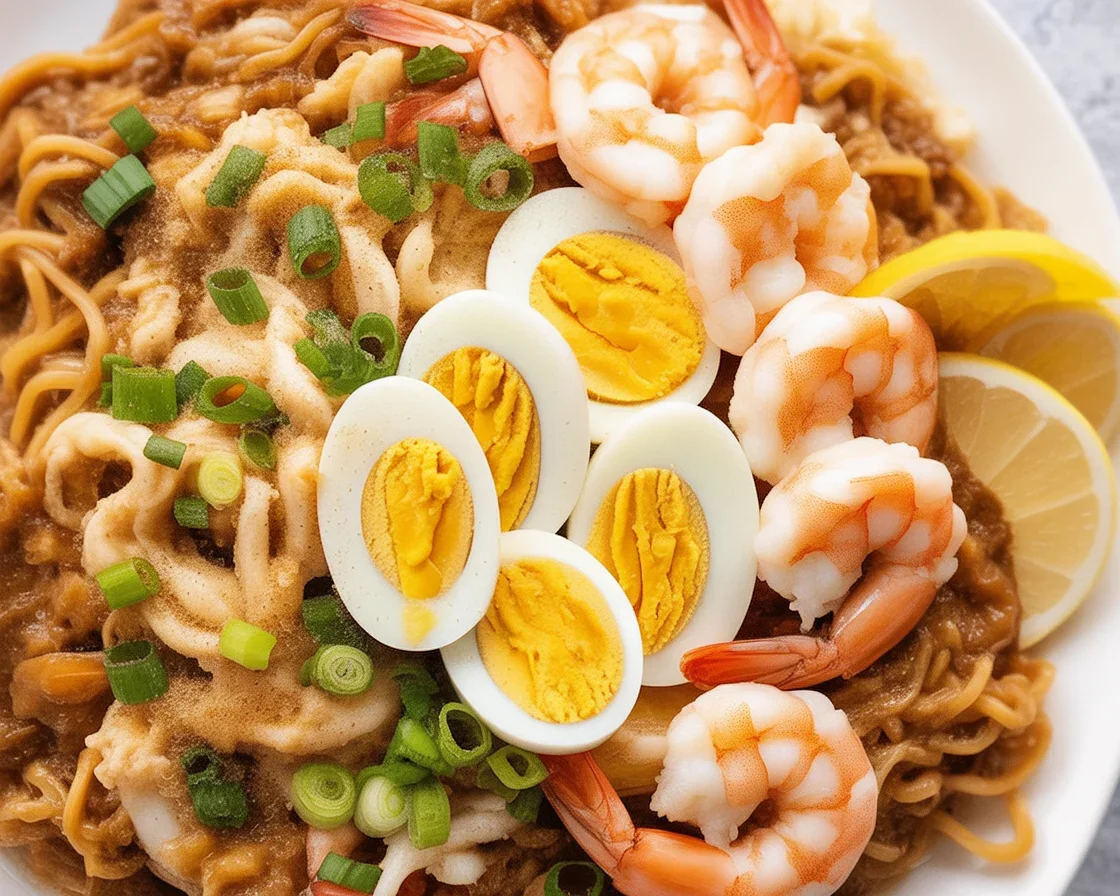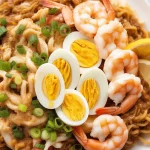- What is pancit Malabon?
- Preparing noodles
- Cooking sauce
- Adding seafood toppings
- Serving
- Flavor notes
- Cultural story
- Common Questions
- Why Your Next Party Needs Pancit Malabon
Filipino pancit Malabon. Tell me you haven’t craved those ultra-savory noodles covered in seafood when you spot them on a party table. I used to think making this dish was impossible outside a proper Filipino kitchen. Heck, if you can boil water and fry garlic, you can pull off a simple version yourself. (Sure, you could just order out, but homemade hits different, trust me.) If you want more tasty classics, check out these authentic Bistek Tagalog or a list of kid-friendly Filipino recipes your whole crew will love.
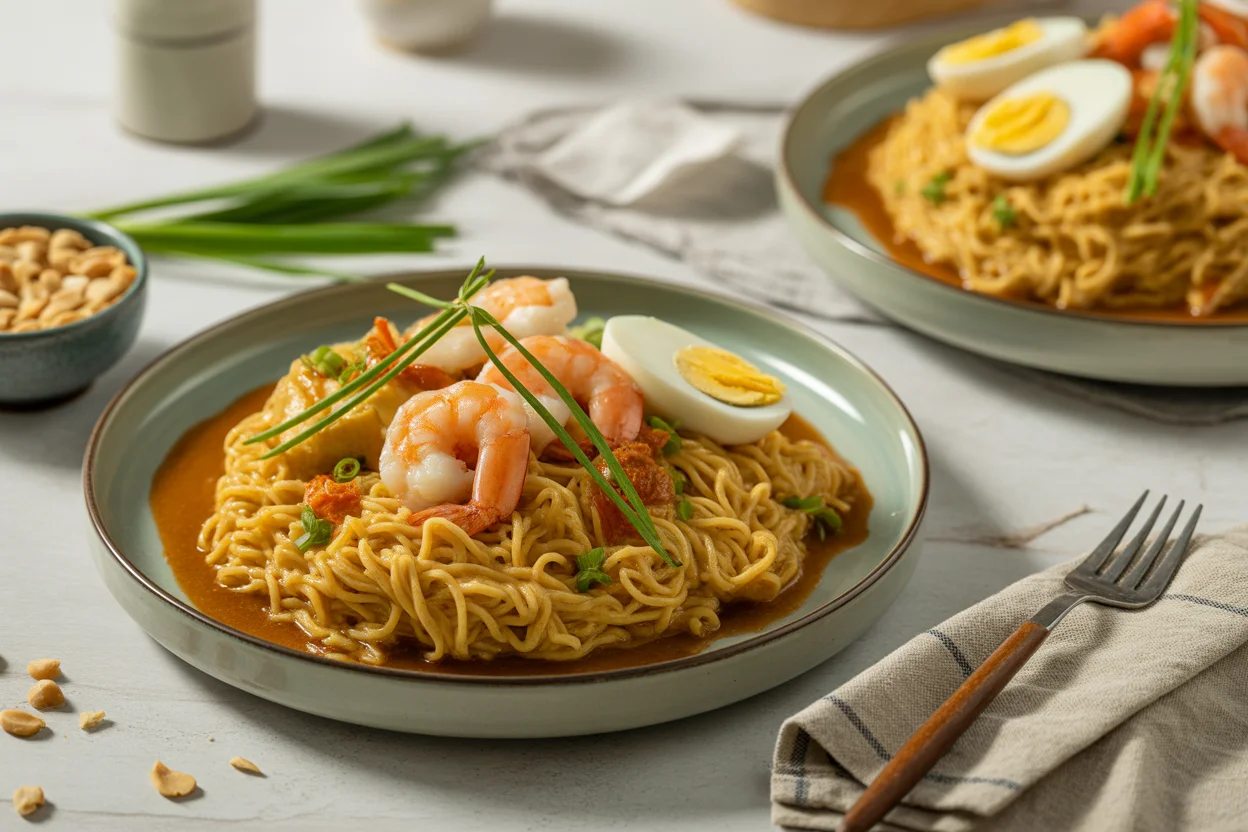
What is pancit Malabon?
Pancit Malabon is one of those dishes that just… calls out to you with bright colors and a heap of seafood toppings. Imagine thick rice noodles swirled in a savory, orange-hued sauce (usually made with shrimp juice and pork stock), then loaded up with shrimps, squid, smoked fish, and crunchy veggies. It’s street food royalty in Malabon, which is a city north of Manila.
People always ask me, “Isn’t it like palabok?” Kindaaa, but not really. Palabok uses thinner noodles and focuses more on pork bits, eggs, chicharrón. Pancit Malabon? It packs way more seafood into every bite. This dish is party food, potluck superstar, merienda, lunch, anything. Even breakfast, if you’re wild like me. My friend once said, “It tastes like someone put the whole fishing port on my plate.” Accurate.
“I grew up eating pancit Malabon during fiestas, and I swear, nothing beats the homemade kind. The noodles just soak up all the flavors perfectly.”
— Jenny L.
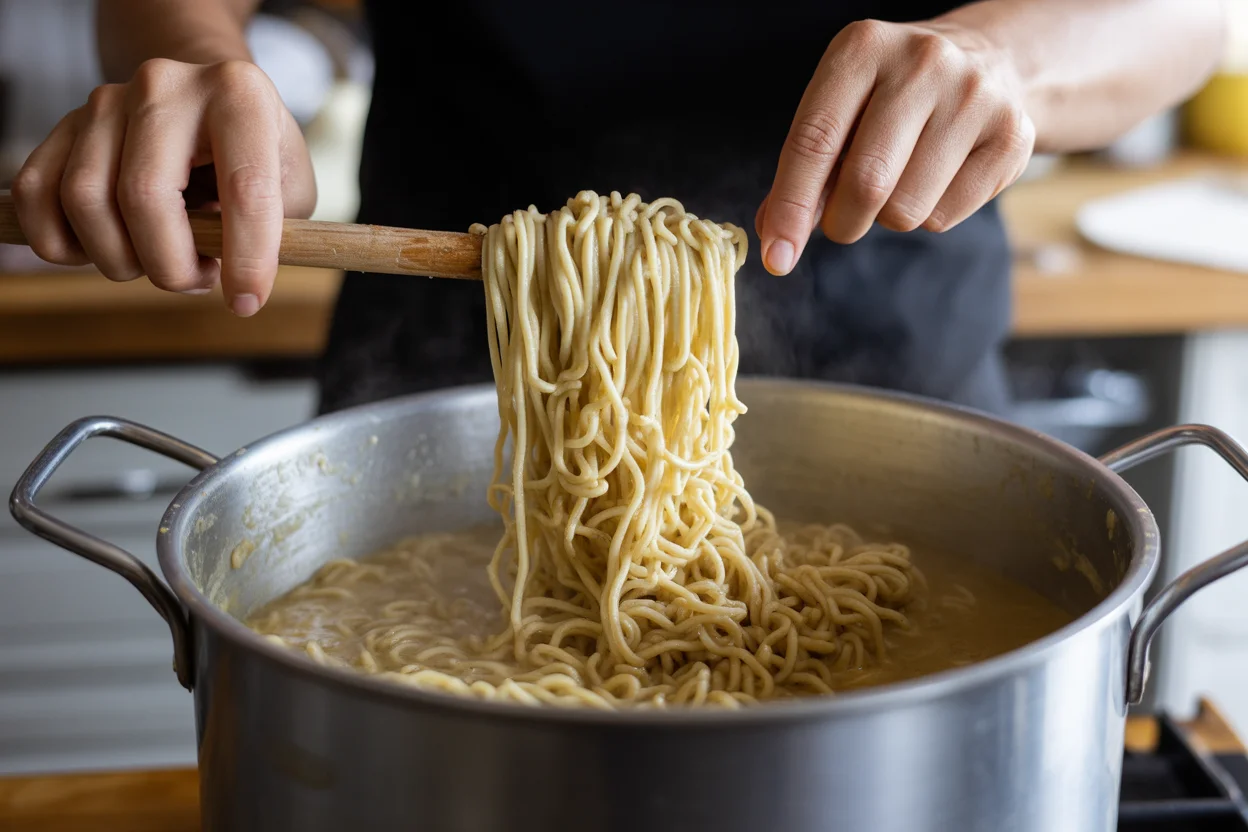
Preparing noodles
You want the chewy kind of noodles for pancit Malabon, not those super soft bihon ones. Hunt down thick rice noodles. Sometimes they call them “luglug” noodles. Already panicking at the Asian store? No shame in asking, “Pancit Malabon noodles po?”
Bring a big pot of water to a boil, toss them in, and, uhh, don’t walk away! They get sticky real quick. Stir every few minutes. Drain. Super key: rinse with cool water. If you mess up here and overcook, you’ll get gummy noodles that stick together. Yikes. Been there—very embarrassing at potlucks. Coat the cooked noodles in a bit of oil (not olive oil please) to keep ‘em glossy and easy to toss. Do this part ahead if you want. Trust me.
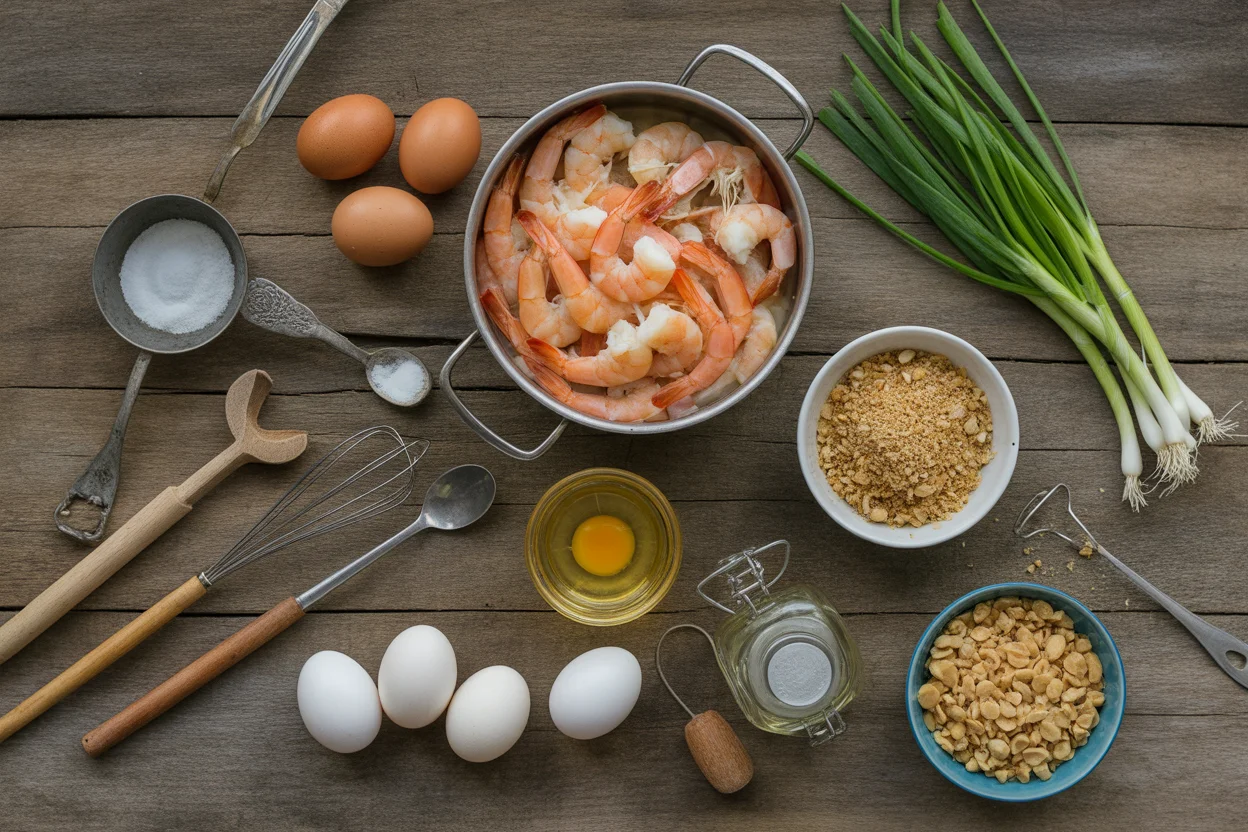
Cooking sauce
This is the soul of pancit Malabon. The sauce. To be honest, a lot of folks make shortcuts. I do too, but the classics: pork fat, shrimp broth, annatto, and a bit of fish sauce. Sometimes you see ground chicharrón or tinapa flakes. My lazy version? Sauté some garlic and onions, add shrimp stock (from boiling shrimp shells), drop in a spoonful of annatto powder or oil for color, then fish sauce and pepper.
Let that bubble, taste, adjust. Add cornstarch to thicken—go sloooow, or it’ll get clumpy. You want the sauce warm and on the thicker side, so it clings to the noodles instead of just disappearing. The seafood flavor should punch you in the nose, in the best way.
Adding seafood toppings
Here’s where pancit Malabon flips the script. Top those saucy noodles with cooked shrimp (small or big, doesn’t matter), squid slices (just sautéed for a minute so they don’t rubber up), and—here’s the kicker—tinapa flakes. That’s smoked fish, and yeah, it’s mandatory for the real experience.
If you’re feeling extra, chuck in mussels, crab sticks, whatever seafood you find on sale. Hard-boiled eggs, chopped green onions, and crunchy chicharrón (or bag of pork rinds from the store) go on top. No need to be precious with amounts. Build a mountain if you want! Every holiday party I bring this dish, it’s gone before the other food even cools down.
Serving
Pancit Malabon is epic for sharing, not hiding. It just looks best in a huge platter. Here are a few (hard-earned) tips I swear by:
- Squeeze calamansi or lemon wedges all over before eating. It seriously brightens up everything.
- Scatter extra chicharrón on top right before serving, to keep it crispy.
- Want to go nuts? Add more garlic and some fish sauce on the side for folks who love a salty kick.
- Eat pancit Malabon with friends, laughter, and—if you ask me—cold soda or a light beer.
Nothing compares to seeing everyone’s eyes get big when you walk in holding a tray of these noodles.
Flavor notes
Honestly, pancit Malabon is loud in flavor. Not shy. The base is umami-rich with shrimp and pork flavors, totally different from just soy sauce. That orange sauce? It’s from annatto—kind of earthy, super inviting. If you load up on the seafood toppings, every bite is a wild sea party for your mouth.
What’s neat: the contrast! Crunch from chicharrón, creaminess from eggs, chewiness from noodles, briny from shrimp. You don’t really get bored with a plate of this stuff. My cousins argue over who gets the most tinapa flakes. That’s how you know it’s good.
Cultural story
Story time. Pancit Malabon goes way back to the fishing town of Malabon where families used local seafood, whatever was freshest that day. You can see how the recipe adapted to what was available. In my family (and probably half of Metro Manila), this dish shows up at birthdays, reunions, or heck, even when somebody just gets a new job.
Some say it started as an affordable meal for workers, but it transformed into a celebration food. It draws everybody to the table—young, old, titos (uncles) ready to make corny jokes. I honestly can’t remember a fiesta without pancit Malabon front and center. It’s the kind of dish where, even if you mess up a step, aunties still pile on the compliments.
Common Questions
Can I use other kinds of noodles?
Sort of, but thick rice noodles taste the most authentic. Spaghetti won’t cut it here!
Is pancit Malabon spicy?
Not usually, but you could chuck in some chili flakes if you want more heat.
How long does it keep?
It’s best fresh, to be honest. If you have leftovers, keep the toppings and noodles separate in the fridge.
What if I don’t have shrimp broth?
You can use chicken or pork broth, but you’ll lose that punchy seafood taste. Or dissolve shrimp bouillon!
Is pancit Malabon gluten-free?
Usually yes, just watch out for soy sauce or processed fish sauce brands.
Why Your Next Party Needs Pancit Malabon
Pancit Malabon is kind of the five-star restaurant dish of Filipino potluck noodles. The mix of chewy noodles, vivid orange sauce, and that bonkers pile of seafood? You can’t beat it. If you’re even just thinking of making pancit Malabon, go for it. Need to riff on it with what’s in the pantry? Do it. Life is too short for boring food. Wanna geek out more? Search Pancit Malabon on Wikipedia or if you wanna try something similar yet different, see this Pancit Palabok Filipino Noodles with Pork and Shrimp for inspiration. So, invite your people, prep your platter, and get slurping.
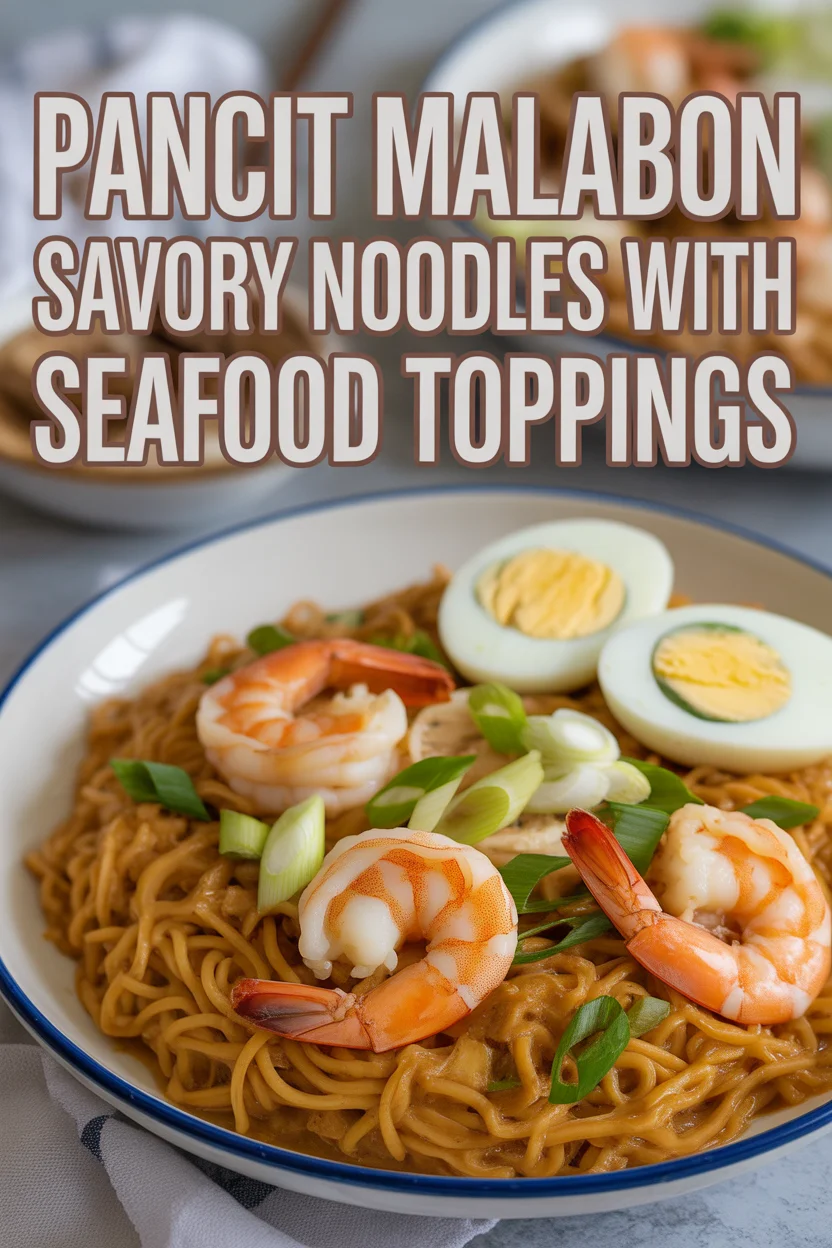
Pancit Malabon
Ingredients
For the Noodles
- 1 pack thick rice noodles (luglug noodles) Avoid super soft bihon noodles.
For the Sauce
- 2 tablespoons pork fat The base flavor for the sauce.
- 2 cups shrimp broth Use from boiling shrimp shells.
- 1 tablespoon annatto powder or oil For color.
- 1 tablespoon fish sauce Adjust to taste.
- 1 teaspoon black pepper Adjust to taste.
- 2 tablespoons cornstarch To thicken the sauce, add slowly.
For the Toppings
- 1 cup cooked shrimp Use small or big shrimp.
- 1 cup sliced squid Sauté briefly to avoid rubbery texture.
- 1 cup tinapa flakes (smoked fish) Essential for authenticity.
- 1 bunch green onions Chopped, for garnish.
- 1 cup chicharrón (pork rinds) For crunch, add more on top.
Instructions
Preparing Noodles
- Bring a big pot of water to a boil.
- Add the thick rice noodles and stir every few minutes to prevent stickiness.
- Once cooked, drain the noodles and rinse with cool water.
- Coat with a little cooking oil to keep them glossy.
Cooking Sauce
- In a pan, sauté garlic and onions in pork fat.
- Add shrimp broth, annatto, fish sauce, and pepper. Let it bubble.
- Adjust seasoning to taste and slowly add cornstarch to thicken the sauce.
- Ensure the sauce is warm and slightly thick to cling to the noodles.
Adding Seafood Toppings
- Top the saucy noodles with cooked shrimp, sautéed squid, and tinapa flakes.
- Feel free to add mussels, crab sticks, or more seafood as desired.
- Garnish with chopped hard-boiled eggs, green onions, and crispy chicharrón.
Serving
- Serve on a large platter for sharing.
- Squeeze calamansi or lemon over the dish before eating.
- Finish with additional chicharrón for crunch.
